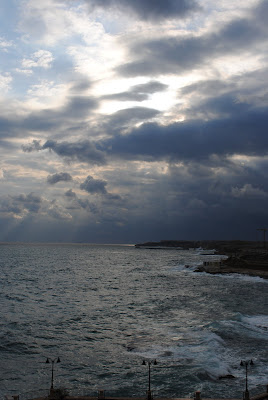
Josh and I celebrated our 18th wedding anniversary in December. Josh decided that we needed to take a short trip, just the 2 of us. Ok - for those who don't know me that well - this is SUPER hard! I don't like to leave the kids for very long and going to another country seemed a little crazy. He convinced me though and we went on our trip in the begining of February.
Malta is not a well know tourist location. I was thinking a sunny island and we would just hope for good weather and sunshine. I learned a little though since I didn't even know where this island was located. In February - the highs are close to 60 though with a strong sea breeze the temps are closer to 54. It was sunny most of the time, but there was quite a bit of rain during our visit.
Malta is a Southern European country and consists of an archipelago situated centrally in the Mediterranean, 93 km south of Sicily and 288 km east of Tunisia, with the Strait of Gibraltar 1,826 km to the west and Alexandria 1,510 km to the east. This little republic had the dubious distinction of being known as the "most bombed place in World War II" Malta became part of the British Empire in 1814 and didn't achieve independance until September 1964. There are Neolithic Temples to explore, natural rock formations and stunning cathedral's. Malta and it's neighboring islands of Comino and Gozo have also been used in several movies such as 1980's Popeye starring Robin Williams, 2000's Gladiatior starring Russel Crow and Josh's FAVORITE movie - 2002's The Count of Monte Cristo starring James Caviezel.
It is a wonderful and beautiful island with a lot to do. In warmer weather there are some small beaches and is listed as a diving hot spot. Please enjoy the following posts!
** Additional historical information was found from various web sites and is in no way ment to be passed off as my own stupendious memory.





































